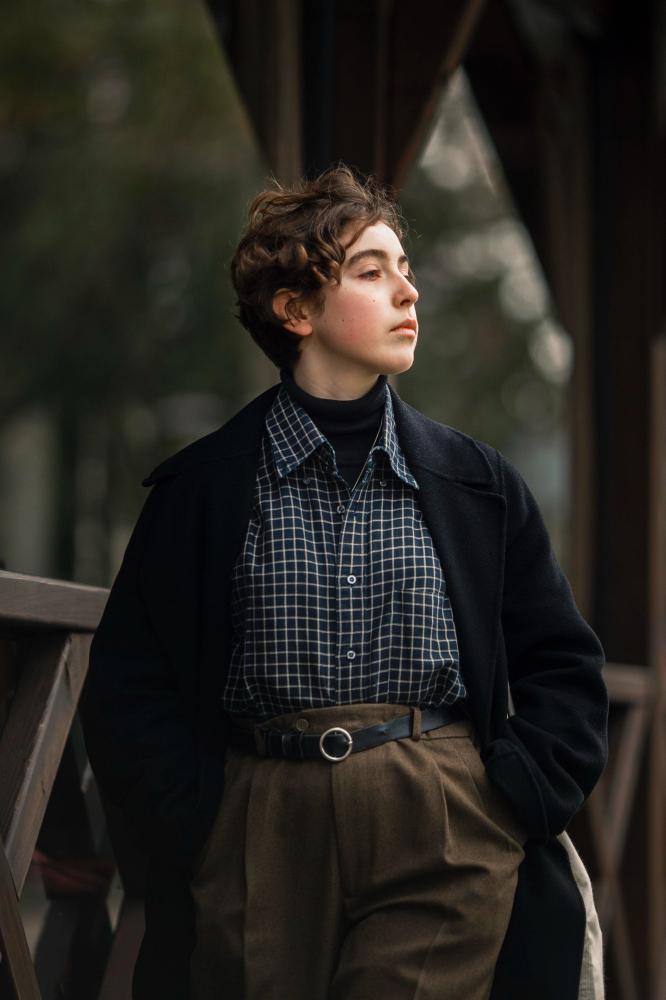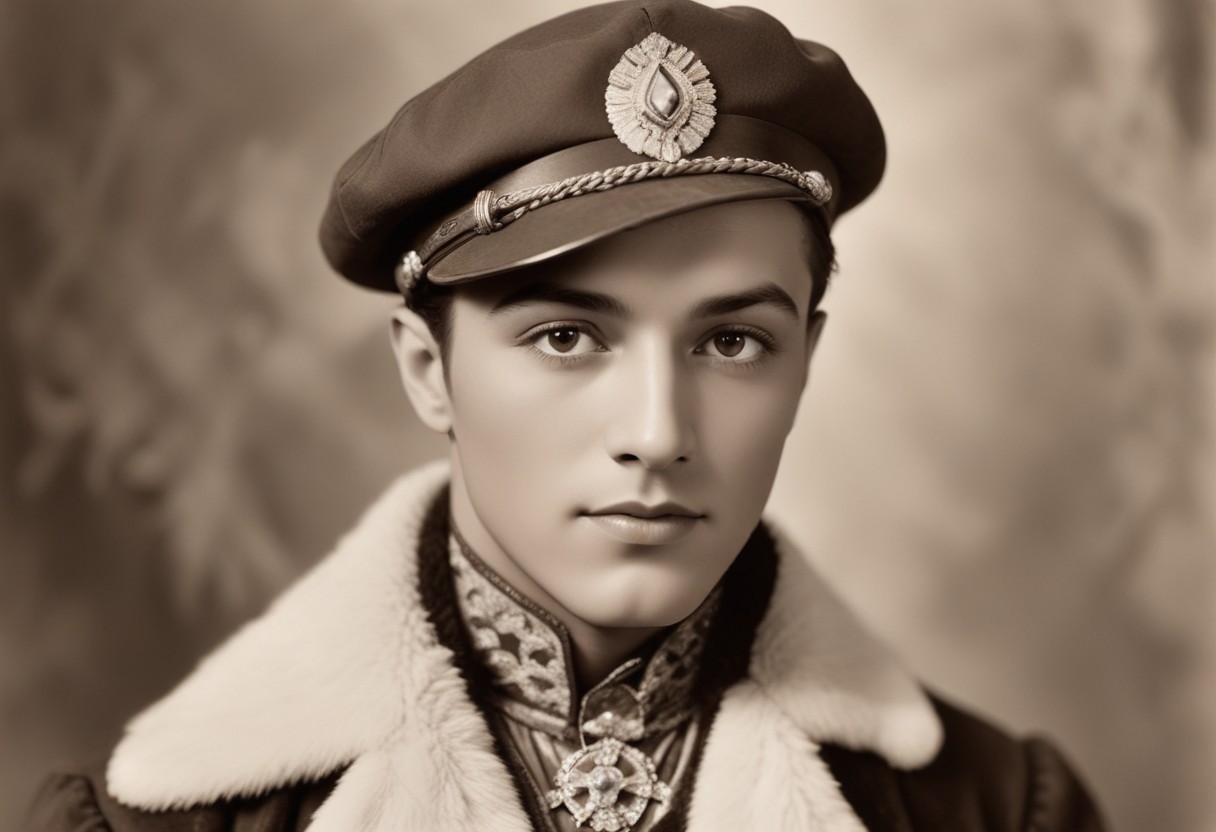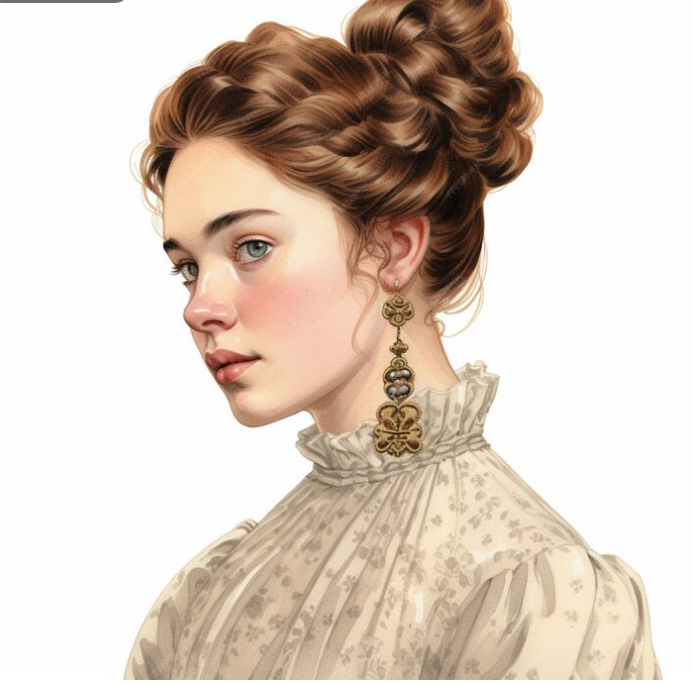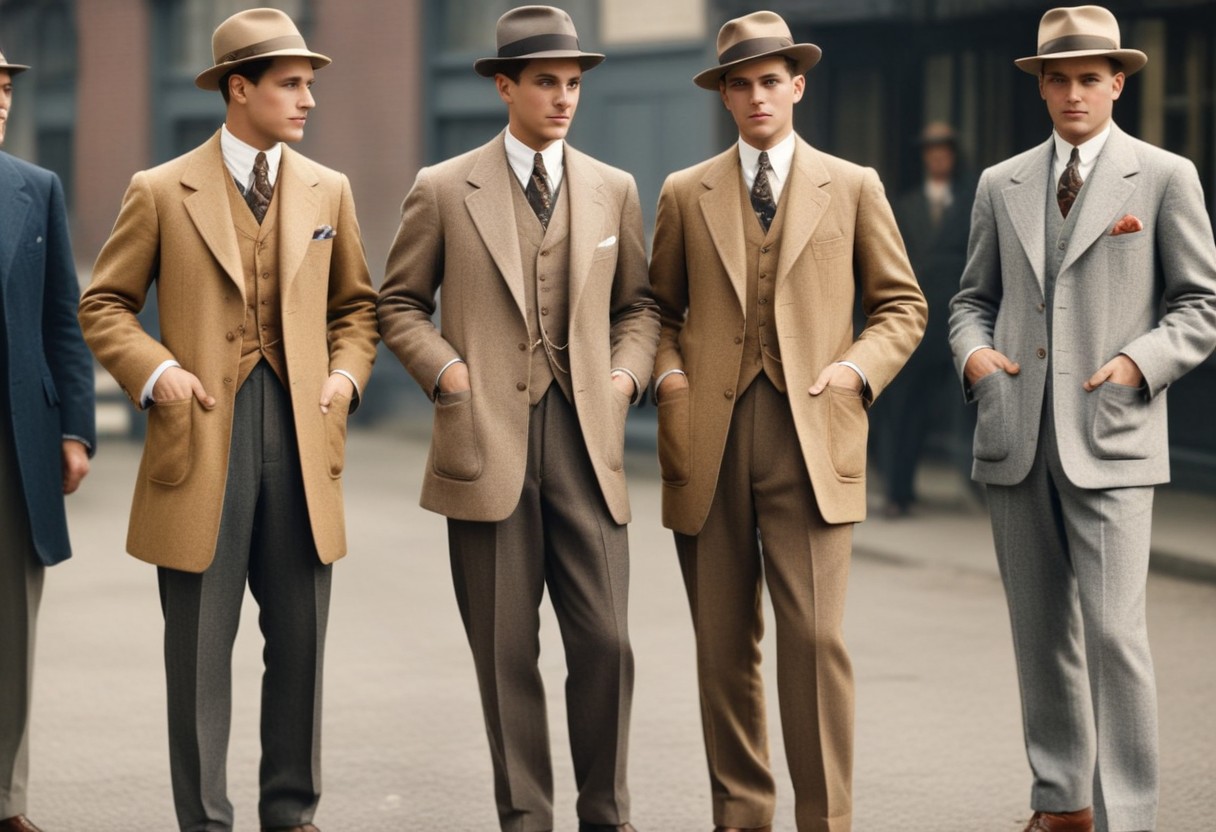
The 20s Mens Fashion was an era when American men’s fashion underwent a revolutionary transformation that reflected the spirit of the era. This pivotal period, characterized by economic prosperity, social change, and cultural dynamism, saw the emergence of distinct styles that continue to influence fashion today. From the dapper gentlemen of the upper class to the rebellious youth embracing new freedoms, the 1920s witnessed a sartorial evolution that broke away from tradition and embraced innovation.
One of the most iconic elements of men’s fashion in the 1920s was the suit. However, this was not the conservative attire of previous decades. Instead, suits became sleeker, more streamlined, and imbued with a sense of modernity. The traditional three-piece suit gave way to the two-piece suit, featuring a single-breasted jacket with a narrower cut and higher armholes. This design allowed for greater mobility and a more youthful silhouette.
Fabric choices also played a significant role in defining roaring 20s fashion men. Wool was still the predominant material, but lighter-weight fabrics such as tweed, flannel, and tropical-weight wool gained popularity, reflecting the desire for comfort and versatility. Additionally, the introduction of synthetic fabrics like rayon allowed for more affordable options without sacrificing style.
One of the most distinctive features of 1920s men’s fashion was the rise of the “dandy” aesthetic. Influenced by the flamboyant styles of English dandies and Parisian flâneurs, American men began to embrace bold patterns, vibrant colors, and luxurious accessories. This marked a departure from the subdued tones and conservative designs of the past, as men sought to express their individuality and embrace a more hedonistic lifestyle.
The iconic accessory of 20s Mens Fashion was undoubtedly the fedora. Originally worn as a practical hat for protection against the elements, the fedora became a symbol of sophistication and style during the 1920s. Paired with a sharp suit and polished shoes, the fedora completed the quintessential “dapper” look and became synonymous with the suave gentlemen of the era.
Another key aspect of 1920s men’s fashion was the emergence of casual wear. As social norms began to relax and leisure time became more abundant, men sought out comfortable yet stylish clothing for everyday activities. This led to the popularization of sportswear-inspired pieces such as knitted sweaters, button-down shirts, and wide-legged trousers. These garments were often embellished with colorful stripes, geometric patterns, and contrasting textures, adding a playful touch to casual attire.
The influence of the Jazz Age also permeated men’s fashion in the 1920s. As jazz music swept across the nation, it brought with it a sense of energy, liberation, and rebellion. This spirit of defiance was reflected in the fashion choices of young men who embraced a more relaxed and unconventional style. Inspired by the rakish charm of jazz musicians and underground speakeasies, they adopted looser-fitting suits, unbuttoned collared shirts, and accessorized with bold neckties and suspenders.
However, it’s important to recognize that 20s Mens Fashion was not uniform across all segments of society. While the affluent elite embraced the latest trends and indulged in luxury fabrics and bespoke tailoring, working-class men often had to make do with off-the-rack garments and more practical styles. Nevertheless, the influence of 1920s fashion permeated all levels of society, shaping the way men dressed and expressed themselves for decades to come.


The Unprecedented and Eccentric Trends of Mens 20s Fashion
The Rise of the Dapper Gentleman
One of the defining fashion trends of the 1920s in the USA was the emergence of the “dapper” gentleman. This style was characterized by sleek, well-tailored suits that exuded sophistication and refinement. The traditional three-piece suit gave way to more streamlined two-piece versions, featuring narrower lapels and higher armholes for a sharper silhouette. Fabrics such as wool, tweed, and flannel were popular choices, providing both elegance and comfort.
Influence of the Jazz Age
The Jazz Age had a profound impact on men’s fashion during the 20s Mens Fashion, inspiring a sense of liberation and rebellion. Young men, in particular, embraced a more relaxed and unconventional style influenced by the vibrant energy of jazz music and the underground speakeasy culture. Casual wear became increasingly popular, with knitted sweaters, button-down shirts, and wide-legged trousers adorned with bold patterns and vibrant colors.
Sportswear-Inspired Clothing
As leisure time became more abundant and social norms relaxed, men sought out comfortable yet stylish clothing for everyday activities. This led to the rise of sportswear-inspired garments such as polo shirts, tennis sweaters, and golf trousers. Made from lightweight, breathable fabrics like cotton and linen, these pieces offered both functionality and fashion-forward style.
Iconic Accessories
Accessories played a crucial role in defining 20s Mens Fashion. The fedora, with its wide brim and distinctive crown, became the quintessential accessory of the era. Paired with a sharp suit and polished shoes, the fedora completed the “dapper” look and became synonymous with sophistication and style. Other popular accessories included neckties, pocket squares, and cufflinks, which added a touch of refinement and personality to men’s attire.
Bold Patterns and Colors
The 1920s saw a departure from the subdued tones of previous decades, with men embracing bold patterns and vibrant colors in their clothing. Influenced by the Art Deco movement and the modernist aesthetic, geometric shapes, abstract motifs, and eye-catching prints became increasingly popular. Suits were often adorned with pinstripes, checks, and houndstooth patterns, adding a playful yet sophisticated touch to men’s attire.
Influence of Hollywood
The burgeoning film industry and the rise of Hollywood stars had a significant influence on men’s fashion trends in the 1920s. Leading actors and celebrities became style icons whose looks were emulated by men across the country. The glamour and sophistication of stars like Rudolph Valentino and Douglas Fairbanks fueled a fascination with tailored suits, sleek hairstyles, and polished accessories, shaping the way men dressed and groomed themselves.
The Emergence and Evolution of Roaring 20s Mens Fashion
The roaring 20s mens fashion in the United States marked a period of unprecedented social, cultural, and economic change, and one of the most visible manifestations of this transformation was in men’s fashion. The fashion of the 1920s revolutionized modern fashion and art scenes in several significant ways, reflecting the spirit of liberation, innovation, and modernity that defined the era.
Revolutionizing Modern Fashion and Art
The fashion of the Roaring Twenties revolutionized the modern fashion and art scenes in several significant ways. Firstly, it challenged traditional notions of masculinity and propriety, ushering in an era of greater freedom and self-expression for men. The embrace of casual wear and bold patterns reflected a desire to break free from the constraints of convention and embrace a more hedonistic lifestyle.
Secondly, the fashion of the Roaring Twenties reflected the broader cultural shifts of the era, including the rise of consumer culture, mass media, and urbanization. The popularity of jazz music, Hollywood films, and underground speakeasies fueled a fascination with glamour, sophistication, and modernity that permeated all aspects of life, including fashion.
Lastly, the fashion of the Roaring Twenties had a lasting impact on the art world, particularly the Art Deco movement. Art Deco, with its emphasis on geometric shapes, streamlined forms, and luxurious materials, mirrored the sleek sophistication of mens 20s fashion. The bold patterns, vibrant colors, and architectural motifs of Art Deco design echoed the flamboyance and exuberance of the era, creating a visual language that continues to captivate and inspire artists and designers today.
The Emergence of the Modern Gentleman
Men’s fashion in the Roaring Twenties saw the rise of the modern gentleman, characterized by sleek, well-tailored suits that exuded sophistication and refinement. This departure from the conservative styles of the past marked a significant shift in men’s fashion, reflecting changing attitudes towards tradition and authority. The traditional three-piece suit gave way to more streamlined two-piece versions, featuring narrower lapels, higher armholes, and shorter jackets for a sharper silhouette. Fabrics such as wool, tweed, and flannel were popular choices, providing both elegance and comfort.
Inspiration from Hollywood
The burgeoning film industry and the rise of Hollywood stars had a significant influence on men’s fashion trends in the Roaring Twenties. Leading actors and celebrities became style icons whose looks were emulated by men across the country. The glamour and sophistication of stars like Rudolph Valentino and Douglas Fairbanks fueled a fascination with tailored suits, sleek hairstyles, and polished accessories, shaping the way men dressed and groomed themselves.
The Most Popular Fashion Icons of 20s Mens Fashion
The 20s Mens Fashion in the United States witnessed the emergence of several fashion icons whose distinctive style and charisma captivated the nation and shaped the trends of the era. These individuals, ranging from Hollywood stars to influential businessmen, became symbols of sophistication, elegance, and modernity, leaving an indelible mark on men’s fashion in the Roaring Twenties.


Rudolph Valentino
Rudolph Valentino, often referred to as the “Latin Lover,” was one of the most iconic film stars of the 1920s. Known for his smoldering good looks and suave demeanor, Valentino epitomized Hollywood glamour and sophistication. His signature style included impeccably tailored suits, crisp white shirts, and polished leather shoes. Valentino’s influence extended beyond the silver screen, shaping men’s fashion trends with his timeless elegance and refined aesthetic.
Al Capone
While not a traditional fashion icon, Al Capone, the notorious gangster and bootlegger, played a significant role in shaping men’s fashion trends in the roaring 20s fashion men. Known as “Scarface,” Capone was famous for his sharp suits, wide-brimmed hats, and flashy accessories. Despite his criminal activities, Capone’s extravagant lifestyle and impeccable sense of style captured the public’s imagination and influenced the fashion choices of many young men seeking to emulate his swaggering persona.
Douglas Fairbanks
Douglas Fairbanks was another influential figure in 20s Mens Fashion. As one of Hollywood’s biggest stars, Fairbanks exuded charisma and charm both on and off the screen. His adventurous roles in swashbuckling films like “The Mark of Zorro” and “Robin Hood” inspired a fascination with daring, heroic masculinity. Fairbanks’ fashion sense mirrored his on-screen persona, with impeccably tailored suits, wide-brimmed hats, and polished boots becoming synonymous with his image.
Scott Fitzgerald
Scott Fitzgerald, the renowned author of “The Great Gatsby,” was not only a literary icon but also a fashion trendsetter in the 1920s. His descriptions of lavish parties, opulent lifestyles, and extravagant wardrobes in his novels captured the imagination of readers and influenced the fashion sensibilities of the era. Fitzgerald himself was known for his impeccable style, favoring tailored suits, crisp collared shirts, and silk neckties. His elegant yet effortless look embodied the spirit of the Jazz Age and continues to inspire contemporary menswear today.
Harold Lloyd
Harold Lloyd, one of the silent era’s most popular comedians, was also a fashion icon of the 1920s. Known for his bespectacled everyman persona and daring stunts, Lloyd’s on-screen characters often sported stylish yet practical attire that resonated with audiences. His signature look, which included tailored suits, bowler hats, and round-frame glasses, became emblematic of the modern, urban man navigating the complexities of city life.
George Gershwin
George Gershwin, the legendary composer and pianist, was not only a musical genius but also a fashion trendsetter in mens 20s fashion. Known for his innovative jazz compositions and Broadway hits, Gershwin embodied the spirit of the Jazz Age with his sophisticated yet playful style. His wardrobe often featured tailored suits in bold colors, accessorized with statement neckties and fedora hats. Gershwin’s fashion-forward look reflected his creative spirit and continues to inspire musicians and fashion enthusiasts alike.
Is Mens 20s Fashion Still Valid and Influential in the Present Day?
The 20s fashion men in the United States, often referred to as the Roaring Twenties, continues to exert a significant influence on contemporary menswear. Despite being nearly a century old, the styles and trends of the 1920s remain relevant and influential in modern fashion, reflecting the enduring appeal of the era’s aesthetics and cultural ethos. From the sleek sophistication of the modern gentleman to the casual cool of jazz-inspired attire, the fashion of the Roaring Twenties continues to captivate designers, stylists, and fashion enthusiasts alike.
Classic Tailoring and Elegance
The hallmark of 1920s men’s fashion was classic tailoring and elegance, characterized by well-fitted suits, crisp shirts, and polished shoes. This timeless aesthetic remains a cornerstone of modern menswear, with designers drawing inspiration from the sleek silhouettes and refined details of the era. Tailored suits with narrow lapels, high armholes, and tapered trousers continue to be a staple of men’s wardrobes, evoking the same sense of sophistication and confidence as their 1920s counterparts.
Vintage Revival and Nostalgia
In recent years, there has been a resurgence of interest in vintage fashion, with many individuals seeking to emulate the styles of bygone eras. The fashion of the Roaring Twenties, with its Art Deco motifs, bold patterns, and luxurious fabrics, has experienced a revival in popularity among fashion-forward individuals looking to add a touch of nostalgia to their wardrobes. Vintage-inspired pieces such as fedora hats, suspenders, and brogue shoes have become coveted items among both enthusiasts and mainstream consumers, reflecting a renewed appreciation for the elegance and glamour of the 20s fashion men.
Gatsby-Inspired Glamour
The release of Baz Luhrmann’s film adaptation of F. Scott Fitzgerald’s “The Great Gatsby” in 2013 sparked a renewed interest in 1920s fashion and culture. The film’s lavish costumes, opulent sets, and Jazz Age soundtrack captured the imagination of audiences around the world, inspiring a wave of Gatsby-themed parties, events, and fashion trends. The glamorous attire worn by the film’s characters, including tailored suits, sparkling evening gowns, and statement accessories, became emblematic of the Roaring Twenties aesthetic and continues to influence contemporary fashion trends.
Influence of High Fashion and Runways
The influence of 1920s fashion can also be seen on the runways of high fashion brands and designer labels. Many fashion designers draw inspiration from the elegance and sophistication of the Roaring Twenties, incorporating elements such as Art Deco motifs, luxurious fabrics, and intricate embellishments into their collections. Runway shows often feature modern reinterpretations of 1920s silhouettes and styles, demonstrating the enduring relevance of the era’s fashion in today’s sartorial landscape.
Adaptation to Modern Lifestyles
While the20s mens fashion may have been rooted in the social and cultural context of its time, it has been adapted and reinterpreted to suit the needs and preferences of modern lifestyles. Contemporary menswear brands offer updated versions of classic 1920s silhouettes and styles, incorporating technical fabrics, innovative construction techniques, and functional details to meet the demands of today’s fashion-conscious consumers. This fusion of old-world elegance with modern sensibilities ensures that 1920s-inspired fashion remains relevant and accessible in the 21st century.
Cultural and Subcultural Influence
The influence of 1920s fashion extends beyond the realm of mainstream fashion to encompass various cultural and subcultural movements. From vintage enthusiasts and swing dancers to steampunk aficionados and cosplay communities, individuals from diverse backgrounds draw inspiration from the styles and aesthetics of the Roaring Twenties. This cross-pollination of influences ensures that 1920s fashion continues to evolve and adapt to the changing tastes and preferences of contemporary society, remaining a vibrant and relevant aspect of modern fashion culture.
Conclusion
The 1920s marked a pivotal moment in American men’s fashion, characterized by innovation, individuality, and a sense of rebellion. From the sleek sophistication of the dapper gentleman to the casual cool of the jazz-loving youth, the styles of the era continue to captivate and inspire fashion enthusiasts today. With its emphasis on comfort, versatility, and self-expression, mens 20s fashion remains a timeless testament to the spirit of an unforgettable decade.
That era witnessed a diverse range of fashion trends that reflected the spirit of the era. From the sleek sophistication of the dapper gentleman to the casual cool of the jazz-loving youth, men’s fashion in the 1920s was characterized by innovation, individuality, and a sense of rebellion. These trends continue to influence contemporary style, serving as a timeless testament to the enduring impact of 1920s fashion.
The roaring 20s mens fashion revolutionized modern fashion and art scenes, reflecting the spirit of liberation, innovation, and modernity that defined the era. From the emergence of the modern gentleman to the influence of the Jazz Age and Hollywood glamour, the fashion of the Roaring Twenties continues to resonate with contemporary style enthusiasts and artists, serving as a timeless testament to the enduring impact of an unforgettable era.
The 1920s in the United States produced a diverse array of fashion icons whose distinctive styles and personalities continue to resonate with contemporary audiences. From Hollywood stars like Rudolph Valentino and Douglas Fairbanks to literary figures like F. Scott Fitzgerald and cultural icons like Al Capone and Harold Lloyd, these individuals left an indelible mark on men’s fashion in the Roaring Twenties. Their timeless elegance, sophistication, and charisma continue to inspire designers, artists, and fashion enthusiasts, ensuring their legacy lives on in the annals of fashion history.
It goes without saying that the fashion of the 1920s in the United States continues to be valid and influential in present-day menswear. Its classic tailoring, vintage glamour, and cultural resonance have ensured its enduring appeal among designers, stylists, and fashion enthusiasts alike. Whether through vintage revival, Gatsby-inspired glamour, high fashion runways, or adaptation to modern lifestyles, the fashion of the Roaring Twenties remains a timeless testament to the enduring legacy of an unforgettable era.



